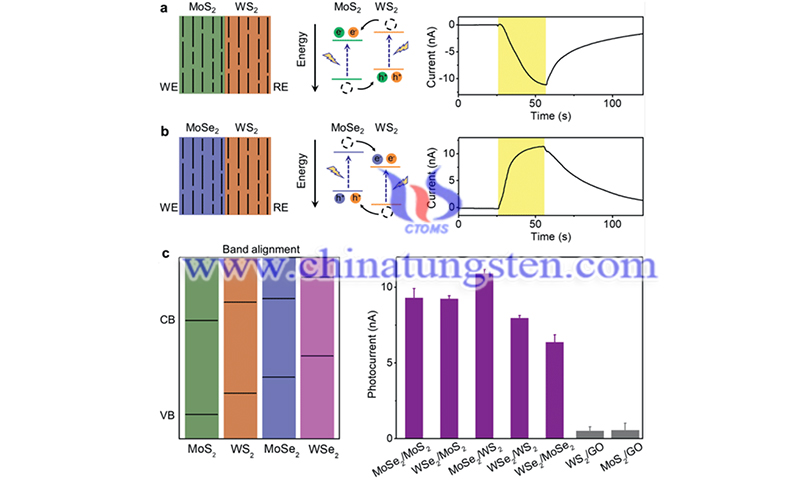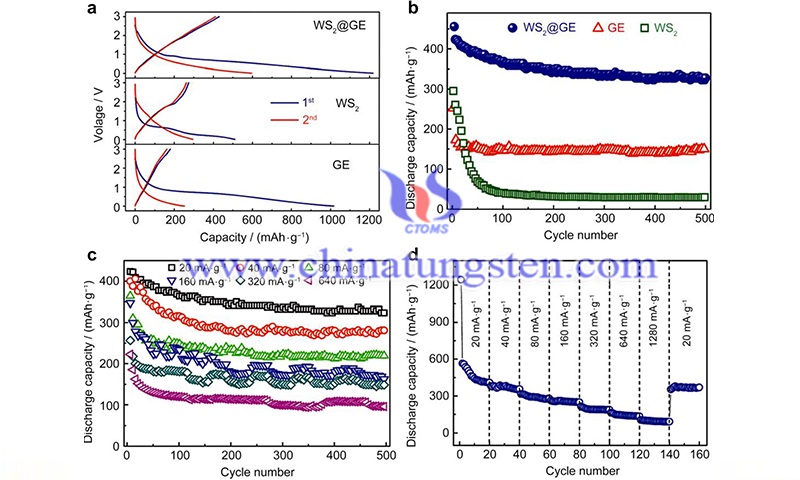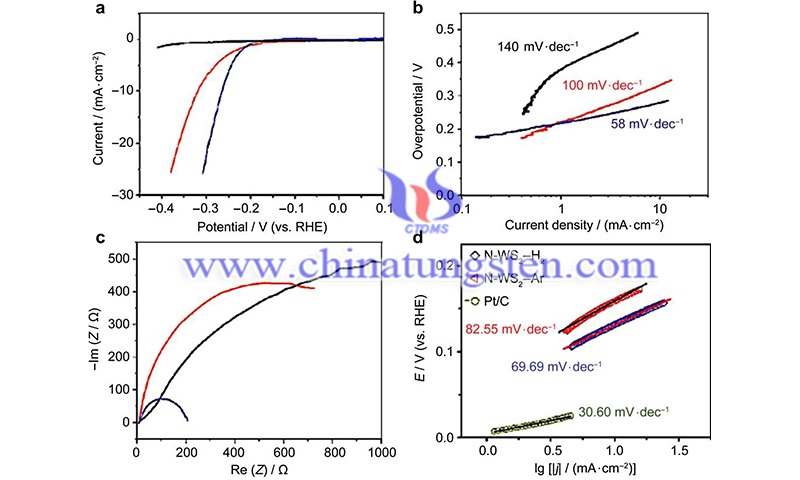Recent Developments in WS2 Energy Conversion and Storage Systems
- Details
- Category: Tungsten Information
- Published on Monday, 29 August 2022 21:54
- Written by Caodan
- Hits: 1068

WS2 has attracted much attention due to its unique structural properties and suitable hydrogen binding energy (comparable to platinum group metals). WS2 nanomaterials have been extensively investigated for energy conversion and storage systems.
Read more: Recent Developments in WS2 Energy Conversion and Storage Systems
WS2 Composites
- Details
- Category: Tungsten Information
- Published on Monday, 29 August 2022 21:48
- Written by Caodan
- Hits: 1286

To improve the electrical and catalytic properties of WS2, the synthesis of WS2 composites from other materials with good electrical conductivity is a promising approach. Composites are materials in which one material is the matrix and another material is used as the reinforcement. The various materials complement each other in terms of properties and create a synergistic effect, resulting in an overall performance superior to the original material.
IF-WS2 and NT-WS2 of WS2 Nanomaterials and Preparation
- Details
- Category: Tungsten Information
- Published on Saturday, 27 August 2022 21:29
- Written by Caodan
- Hits: 1240

Various forms of WS2 nanomaterials include nanosheets, IF-WS2, NT-WS2, and other forms. Chemical gas-solid reactions are the most well-known and established method for the synthesis of IF WS2 nanoparticles and nanotubes. Tenne et al. initially synthesized IF WS2 nanoparticles and nanotubes using WO3 films and H2S in a reducing atmosphere (95% N2 + 5% H2) at 850 °C. However, only a small amount of products could be synthesized by this method.
Read more: IF-WS2 and NT-WS2 of WS2 Nanomaterials and Preparation
WS2 Hybrid Structures
- Details
- Category: Tungsten Information
- Published on Saturday, 27 August 2022 21:33
- Written by Caodan
- Hits: 1124

In WS2 hybrid structures, atomic doping is one of the effective ways to change the physical and chemical properties of the material, such as band gap and optical properties. For example, Sasaki et al. demonstrated that the exciton absorption peaks at 1.94 and 2.34 eV, respectively, were broadened by Nb doping. This suggests that excitons in WS2 monolayers are sensitive to Nb doping because of the enhancement of the inhomogeneous broadening rate.
Most Common Form of Tungsten Disulfide Nanomaterials: Nanosheets
- Details
- Category: Tungsten Information
- Published on Thursday, 25 August 2022 16:35
- Written by Caodan
- Hits: 1032

Nanosheets of tungsten disulfide nanomaterials are the most common form, and the main synthetic strategies can be divided into two categories: top-down and bottom-up approaches. Top-down approaches allow the production of small amounts or single-layer samples at a lower cost, which is very beneficial for basic research. Among these top-down methods, mechanical peeling via Scotch tape is the simplest method, with only a few or single layers of WS2 exfoliated via Scotch tape.
Read more: Most Common Form of Tungsten Disulfide Nanomaterials: Nanosheets





 sales@chinatungsten.com
sales@chinatungsten.com